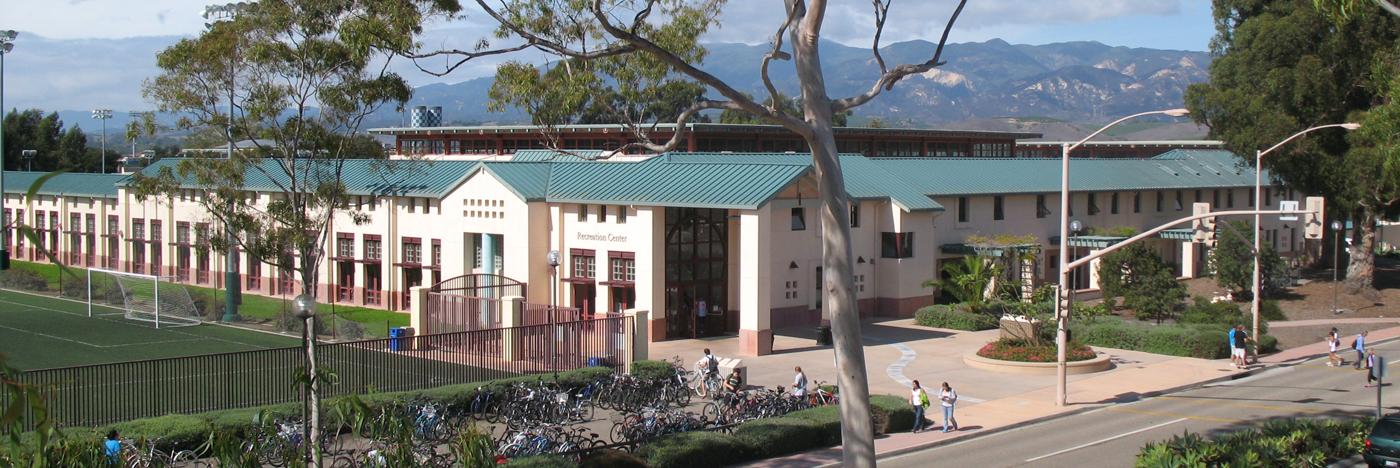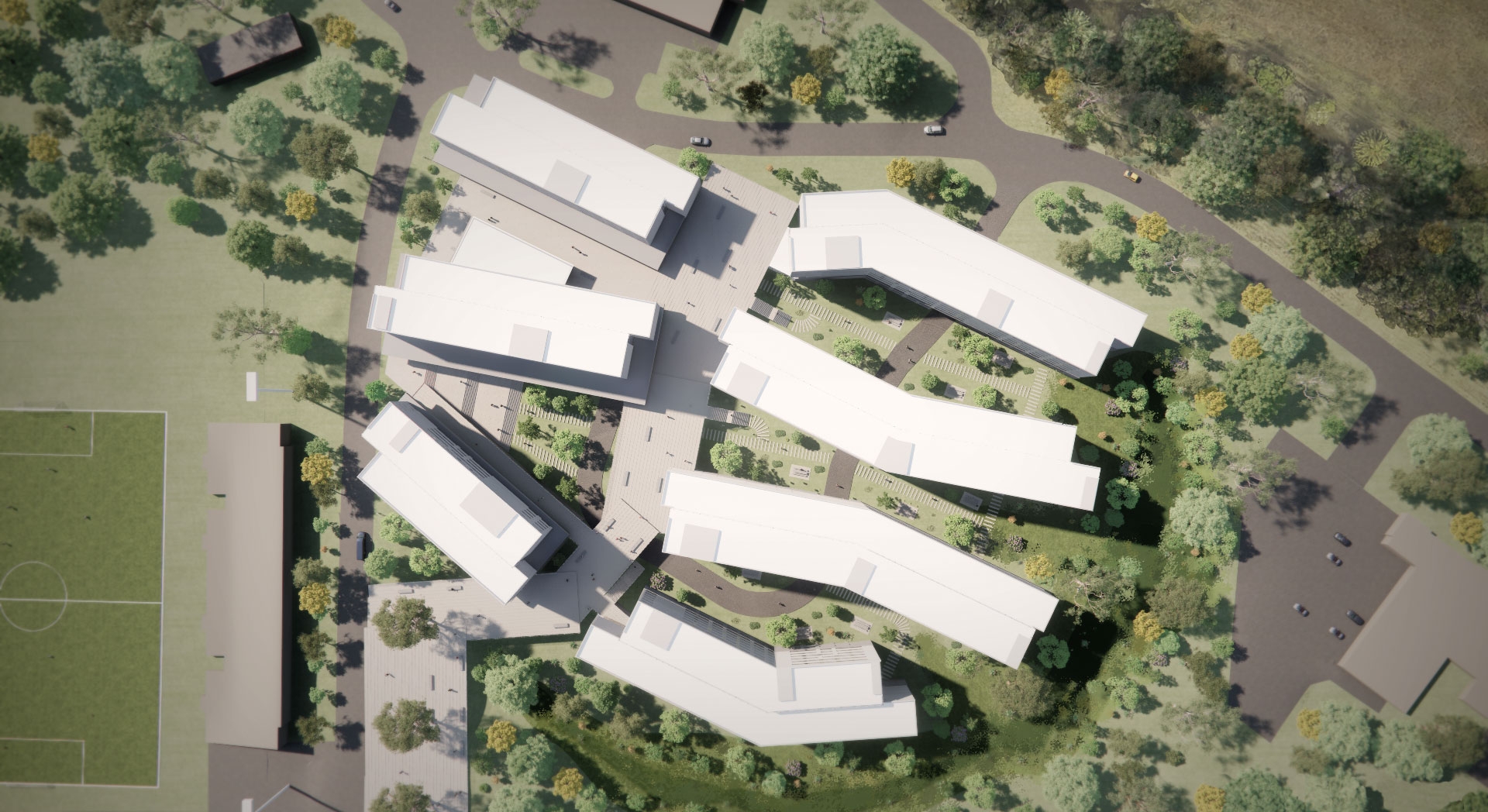
For a facility built when sustainability in construction was more of an afterthought, UC Santa Barbara's Recreation Center sure has come a long way. The three-building complex that serves the recreational needs of UCSB's students, staff, and faculty has been designated a "Zero Net Energy Demonstration Showcase" project for sustainability by Southern California Edison (SCE).
SCE will perform an energy efficiency analysis of the Recreation Center and provide recommendations for achieving Zero Net Energy (ZNE) or near-ZNE performance within the facility. UCSB will then purchase and install the recommended solutions, with assistance from available incentive and rebate programs at SCE. Bill McTague, UCSB's executive director of Resource Planning, Information Technology, and Sustainability for the Division of Student Affairs, calls this collaboration "a fantastic opportunity for UCSB to benefit from SCE's expertise and guidance, and for SCE to be able to showcase energy solutions and monitor their effectiveness over time."
Gregg Ander, chief architect at SCE, said: "We are excited to be a part of this project with UC Santa Barbara. This initiative will allow us to build upon our successful partnership with UCSB to work toward achieving big, bold energy efficiency and ZNE goals set forth by the State of California in the 2008 Long-Term Energy Efficiency Strategic Plan."
Michael Young, UCSB's vice chancellor for student affairs, said that "with the help of funding from UCSB's students, the Division of Student Affairs is implementing a plan to make all its facilities energy independent (zero-net-energy usage) by academic year 2015-16, and we hope to incorporate the SCE recommendations into other buildings to move us toward that goal."
"Our ZNE plan," Young added, "is expected to save millions of dollars in annual energy costs that can be redirected to the co-curricular program." UCSB students passed a Student Services Renewable Energy Initiative during 2009-2010 in order to collect $3.4 million over 10 years for the construction of renewable energy sources for student-funded facilities.
Selection as a "ZNE Demonstration Showcase" project by SCE isn't the first time that the Rec Cen, as it's known on campus, has received recognition.
It is considered a leader among recreation facilities in the University of California system for renewable energy and sustainability.
In 2008, the Rec Cen was recognized by the U.S. Green Building Council with a LEED Silver Existing Building (EB) Certification, the first –– and still the only –– university recreation center in the United States to receive such a distinction.
According to Gary Jurich, Rec Cen building director, "this place was never designed to be energy efficient.
It's all due to retrofitting, which makes the EB certification all the more amazing."
The first part of the complex, Rec Cen I, was built in 1994 and included two gymnasiums, two swimming pools, two weight rooms, and several squash and racquetball courts.
Rec Cen II followed in 2005, with the addition of more weight rooms and exercise facilities, including the Multi-Activities Center (MAC), which is roomy enough for a full-sized roller-hockey rink. One important –– and visible –– part of the Rec Cen's sustainability success story is the 155-kilowatt photovoltaic array on the roof of the MAC.
It's the largest collection of solar panels on the UCSB campus.
Dedicated in December 2008, the array has been a big success, generating about 68 percent of the building's electricity every year.
The installation of solar panels was followed by the LEED EB certification process, which forced an examination of all day-to-day activities.
"We changed the way we eliminated garbage," Jurich said. "We put water-saving devices on all of our spigots and showers.
We put in dual-flush toilets, waterless urinals.
As a result, we're saving about 500,000 gallons of water every year." Inefficient lights in the administrative offices and classrooms were replaced with T8 fluorescent lights, which use about half the electricity. "We have half as many bulbs now and they produce just as much intensity," Jurich said.
Also, LED lights are now on every desk throughout the Rec Cen, with an expected lifespan of 30,000 hours each.
The most recent sustainability project at the Rec Cen is the installation of five new exercise bicycles in 2010.
These aren't regular bicycles, however. Instead of using electricity, these bicycles allow students and other riders to generate power that's returned to the complex's utility grid.
It's the brainchild of Julie Castro, a former engineering student at UCSB, who came up with the idea and sought funding from UCSB's The Green Initiative Fund (TGIF), which provides backing for sustainability projects at UCSB.
The $7,500 TGIF grant was enough to cover the cost of the bicycles and the necessary equipment to change kinetic energy generated by the bikes into electricity.
A 30-minute workout produces about 75 watts.
The campus's long-term goal is to turn the Rec Cen into a net-zero facility –– one that produces as much energy as it uses.
But there are several substantial hurdles to overcome, such as finding money to add solar panels to preheat the water in the two pools, and replacing 250 old, inefficient lights in the two gyms.



